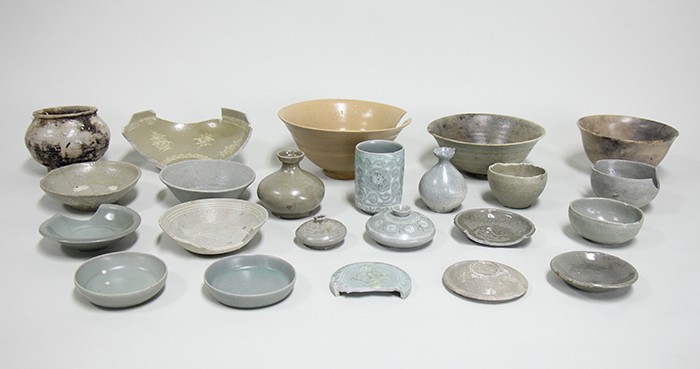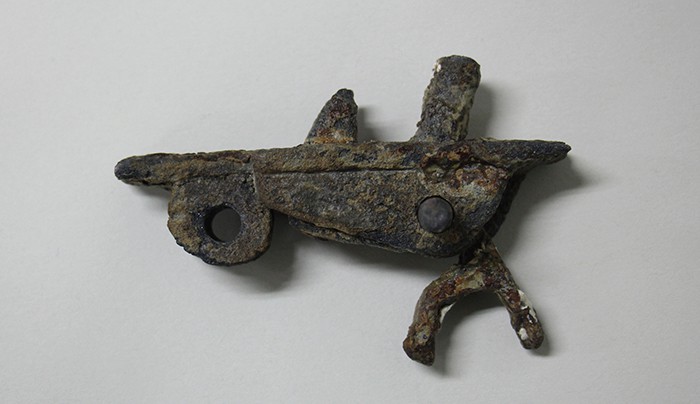
A variety of Goryeo celadon porcelain is discovered during the fourth underwater excavation at the Myeongnyang Straits off the southwestern tip of the Korean Peninsula in Jeollanam-do Province.
A fourth underwater excavation at the Myeongnyang Straits, off the coasts of Jindo-gun County in Jeollanam-do Province, concluded on Oct. 15, and brought to light 130 new relics. The National Research Institute of Maritime Cultural Heritage had been excavating certain underwater sites in the straits over the past six months.
While the Myeongnyang Straits are known for their strong tidal currents, the straits have been traversed by ships since ancient times, as a shortcut between the Yellow Sea and the South Sea. It is also the historical location where Admiral Yi Sun-sin won a famous battle in 1597 against 133 invading Japanese marauders with a flotilla of just 13 Joseon armored vessels.


During the fourth underwater excavation at the Myeongnyang Straits, researchers discovered two Joseon-era cannonballs, or seokhwan (top), and the trigger for an arrow gun, or nogi.
During the fourth excavation, researchers discovered many ornate pieces of Goryeo celadon, including plates, glasses and vases. White porcelain and earthenware were also found. They discovered two more Joseon-era cannonballs, or seokhwan (석환), four of which were found during the first and second excavations. A trigger for an ancient arrow gun, or a nogi (노기), was discovered as well, proving that the Myeongnyang Straits were once a ferocious battlefield.

Stone anchors are unearthed in a section of the Myeongnyang Straits during the fourth underwater excavation.
At one excavation site, researchers were able to locate 54 stone anchors, or datdol (닻돌), used to help sink the main anchor, which was made of wood. The research center believes that these stone weights are evidence that the straits served as a dock for many passing ships. They discovery of a Chinese stone anchor is further proof that the docks in Jindo-gun County, as well as the Mado docks in Taean-gun county, Chungcheongnam-do Province, were layover points for Korean, Chinese and Japanese vessels during ancient times.
By Lee Hana
Korea.net Staff Writer
Photos: Cultural Heritage Administration
hlee10@korea.kr























